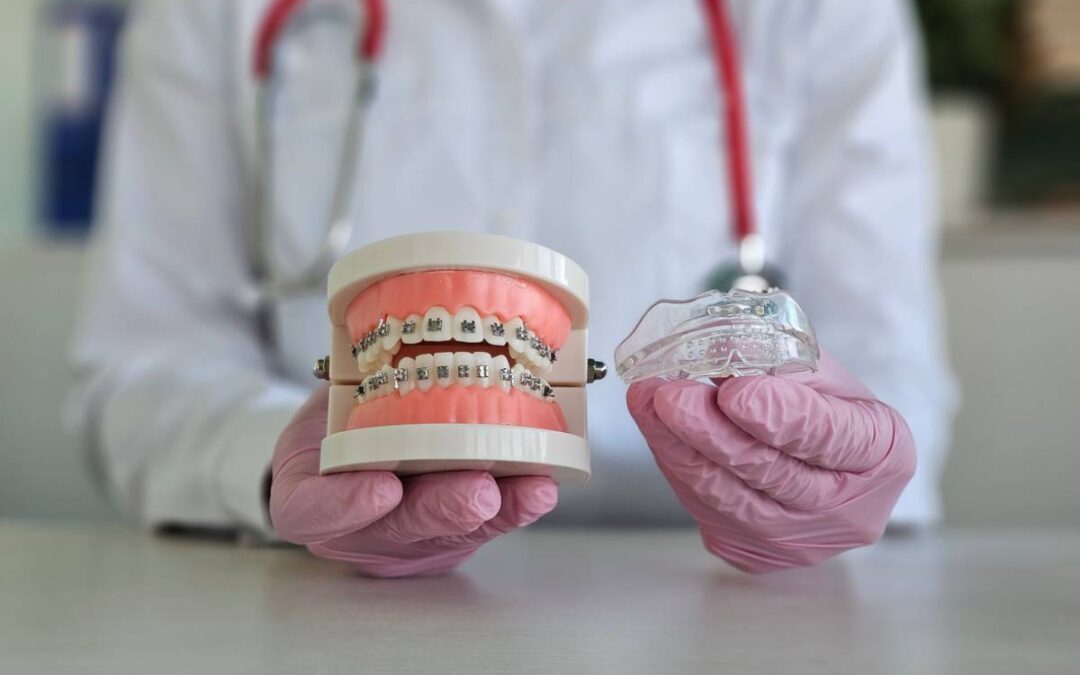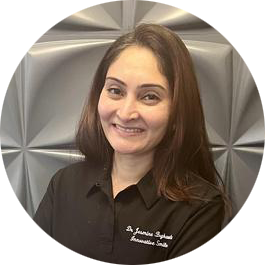Wearing retainers might not be the most fun after your orthodontic treatment. You have spent months to years improving your smile. But the path does not always end there. So you will want a good reason to do so. What does a retainer do for your teeth?
What Does a Retainer Do for Your Teeth?
A retainer picks up where your braces or Invisalign left off. The truth is, many patients may see their teeth shift after orthodontic treatment. Usually, this happens when there is insufficient room for all your teeth along the jaw.
In these cases, patients may need to wear a post-treatment retainer. As the name implies, this dental device retains your new smile, keeping the teeth from shifting.
Additionally, it provides support for your jawbone as it adjusts to the new teeth alignment. Depending on your situation, you may need to wear it for a few months or perhaps quite longer.
How the Retainer Works
Maintaining Tooth Alignment: The physical structure of the retainer applies pressure to your teeth. The retainer is specifically shaped to apply pressure in areas to prevent teeth from shifting back.
Supporting Bone Adaptation: Orthodontic treatment works by a process that literally remodels parts of your jawbone. As the teeth are dragged into position, they move through the bone itself. Understandably, your jaw can need some time to fully settle after treatment.
Helping Prevent Grinding & Clenching: Some retainers might pull double duty by reducing your risk for grinding and clenching. Bruxism can damage your smile and further cause tooth shifting.
Benefits of Continuing to Wear Your Retainer
- Avoid having a second round of orthodontic treatment
- Keep your oral health at its peak
- Continued confidence in a smile that looks great
- Avoid more costs for future treatments down the road
Do Different Retainers Work Differently?
All retainers serve a similar purpose. They are designed to keep your teeth and jaw from shifting. The shape and placement of the retainer will affect what part of the mouth it is meant to stabilize. Your retainer may feel slightly different, depending on the type you have. However, they each will keep the required pressure on your teeth and jaw to keep them in their new position.
Types of Retainers
Each of the three main retainer types work the same way. However, some can be removed while others are permanently fixed in place.
- Fixed Retainers: Also called permanent retainers, these are permanently bonded to the backs of your teeth. They provide excellent stability. But they may prove more of a challenge for maintaining and cleaning them.
- Removable Retainers: You can take these out for easy cleaning. However, take care while they are out not to lose or damage them.
- Clear Retainers: Much like Invisalign, clear retainers aim to minimize visibility.
Signs Your Retainer Is Not Working
Usually, a retainer only begins to have issues after it has worn down or become damaged. When this happens, the retainer could end up doing some harm. In addition, it might not keep your teeth in position.
Watch out for signs like:
- Cracks: Even small cracks in a retainer could cause issues. For one thing, bacteria could begin making their homes in those cracks. Cracks typically appear due to normal wear after about a year.
- Poor Fit: A loose retainer will not keep your teeth in place. If your retainer shifts or even falls out, then the fit likely has some issues.
- Warping: Your retainer may start out one shape but eventually begin to warp. This change can appear subtle, as it happens gradually. Keep an attentive eye on your retainer, and replace it when it begins to warp.
- Calcium Buildup: Over time, calcium buildup on a retainer can influence how it fits. Though these changes may look minor, they can lessen the impact of your retainer.
What Happens If You Do Not Wear Your Retainer?
Insufficient or improper use of a retainer may gradually lead to a patient losing their hard-earned benefits from orthodontic treatment. Going even a few days without your retainer could set you back.
For parents, we recommend staying involved in your child’s dental health. Look for ways to encourage them to wear their retainer as instructed. Otherwise, those months (or years) spent in braces or Invisalign might have all been for nothing.
A Top Center for All Orthodontic Needs
Whether you need orthodontic treatment or post-treatment care, our center provides for every dental need. Work with an award-winning dentist who is a local favorite.


